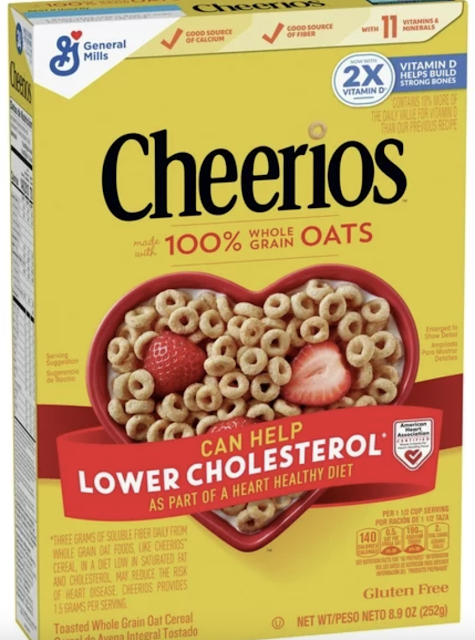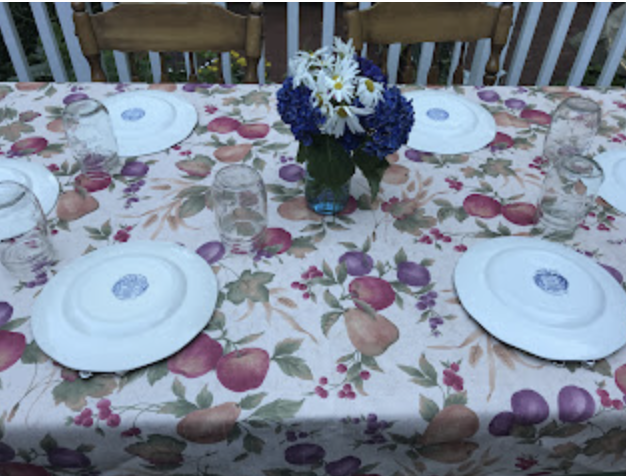 |
| What I made for breakfast this morning |
Sometimes my curiosity about a past version of a product takes me down a rabbit hole of cost comparisons. This a 1970s Cheerios box, from worthpoint.com. Notice it's a 15-ounce size. There's no indication on the package that this is a "family," "economy," or "large" size. It might have been considered "large" as I also found 7 and 10-oz boxes of Cheerios dating from about the same time period.
This photo of a box of Cheerios was taken from Walmart's website this morning. The 18-ounce box is labeled "Family Size." It sells for $4.93 and contains 13 1.5 cup servings at 38 cents per serving, not including milk. (A 1.5-cup serving is according to the package nutrition label.)
The regular size of Cheerios at Walmart is the 8.9-ounce box, priced at $3, containing 6 1.5-cup servings. Each serving, then, costs 50 cents, not including milk.
If one adds a cup of milk to the cereal, the cost per serving plus milk increases by about 15 to 20 cents.
Stores also sell house brands for substantially less. Great Value brand Toasted O's sells for $1.67/12-ounce box, containing 8 servings. A 1.5-cup serving, then, works out to 21 cents for the cereal alone, and 36 to 41 cents if a cup of milk is added.
Our family is not big on cereal-eating at breakfast time. Most of my family choses to have cereal as a snack. But for breakfasts, I was curious about a cost comparison between what we normally eat and the cost of a serving of cereal plus milk. A typical breakfast in our house is an egg, buttered slice of toast, and a small glass of juice. An egg currently costs us 12 cents. A slice of bread plus butter adds another 10 cents. Adding a small glass of orange juice (from frozen concentrate) tacks on 15 to 20 cents, for a total cost of 37 to 42 cents per breakfast. Our cost for an egg, toast and juice breakfast is comparable to the cost of generic toasted oat cereal plus milk.
But wait, what about the time savings with eating a bowl of cereal for breakfast? I thought about that and decided to time myself making an egg, toast, and oj breakfast. From the time I turned on the stove until I was walking away with a plate of breakfast, it took 6 minutes. And I had 15 seconds in there to give the non-stick skillet a quick wash and set it to dry on a towel next to the sink.
My conclusion in all of this is that if cold cereal is someone's breakfast "thing," then a bowl of generic-brand cereal won't cost more than an egg, toast, and juice. However, if the morning fuel you need is the latter breakfast, you really won't be spending an extraordinary amount of time frying or scrambling that egg and making toast, and it will cost just about the same as the cereal breakfast.
Just the rabbit hole I found myself in this afternoon.






































